Setting the Stones for a Dry-Stack Retaining Wall
Get tips for choosing the right stones and fitting them properly to create an attractive and long-lasting garden wall.
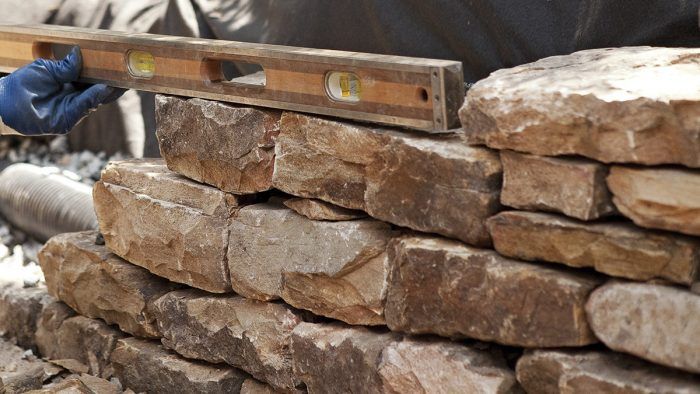
Before you start stacking stones, prepare the site by removing soil left from the excavation and set up a work area. Lay down plastic sheeting to protect driveways and patios 1. Lay out three sheets of plywood as well; pile unshaped stones on one, pile gravel on the second, and reserve the third one for shaping stones. Keep the work zones close together to minimize unnecessary movement.
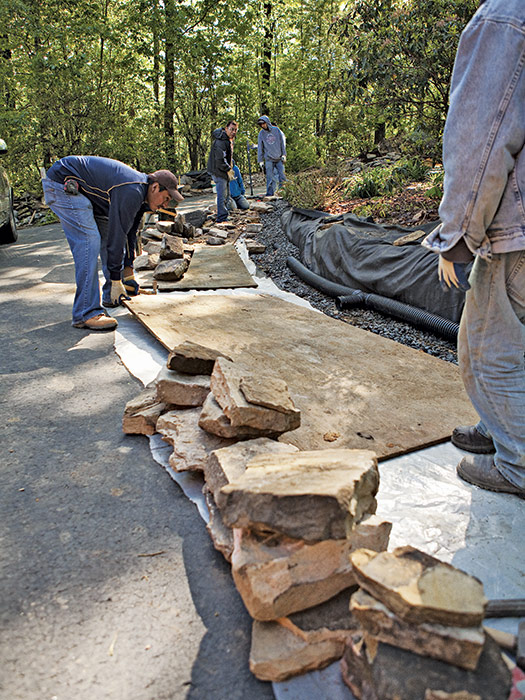
Use large stones, with the best edges facing out, for the bottom course; they will anchor the wall, both visually and structurally 2. Vary the stone heights to break long-running horizontal joints. Also, cross (or break) all vertical joints when possible. This is important for both structural and aesthetic reasons. The more often you cross the joints, the better the stones lock together and the better it will look 3.
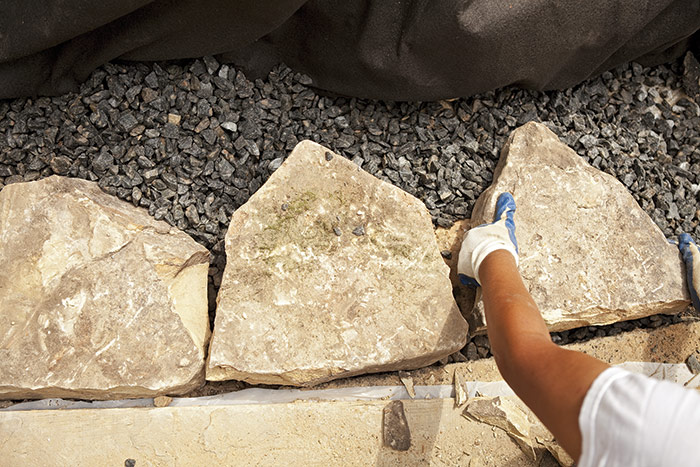
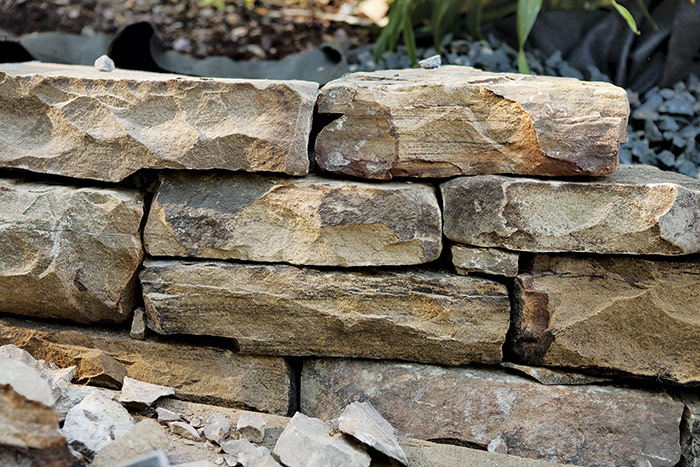
Once you lay a row of 9 or 10 stones, backfill with clean gravel 4. If any of the stones in the next course are wider than the previous course, the gravel will provide a level area large enough to accommodate them. Add enough gravel under stones that taper to ensure that the tops of the stones are level from back to front. This not only makes the wall stronger but also makes it easier to set the next row of stones. If a stone is not level from side to side, use the small shards left over from shaping stones to shim it 5. Shims are also good for filling small voids that are inevitable regardless of how carefully you shape the stones. However, don’t use shims as a substitute for shaping stones to fit.
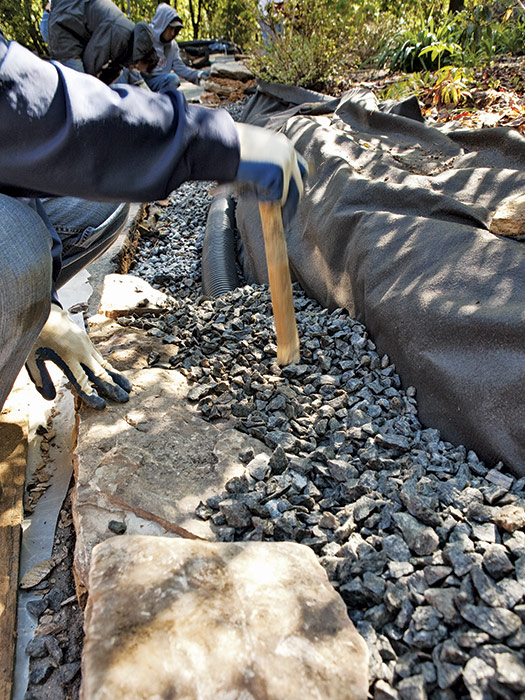
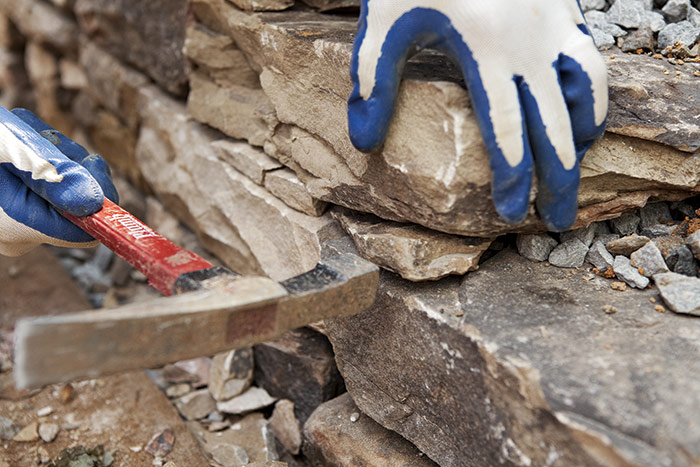
As you build the wall, keep a tape measure handy. Many novice wall builders try to judge size by eye alone. Using a tape measure also helps make it easier to see where the joints will cross 6.
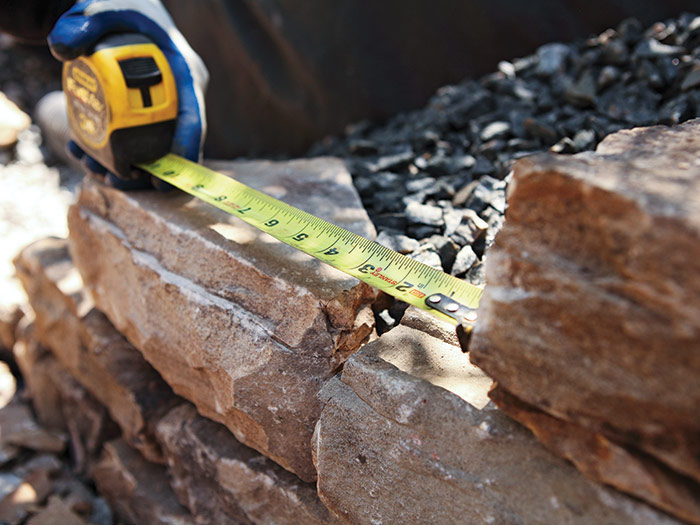
The other tool to keep on hand is a level. Periodically, check the coursework to keep the tops of the stones level 7. Even on sloped ground, keep the coursework level. Another reason to use a level is to maintain a batter (a slight backward tilt to the face of the wall). A 1-in.-per-foot batter is good for typical walls 8. Lastly, use the level to keep the face uniform 9. Even for a curved wall, eyeing the wall with a level is a good way to identify stones that are set too far in or out.
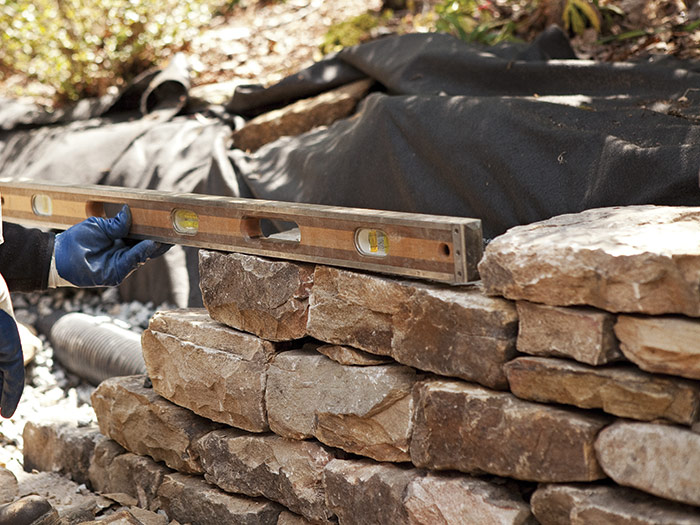
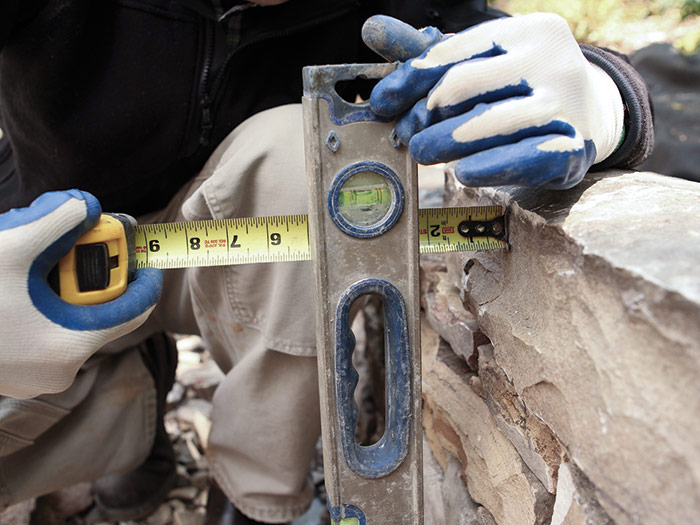
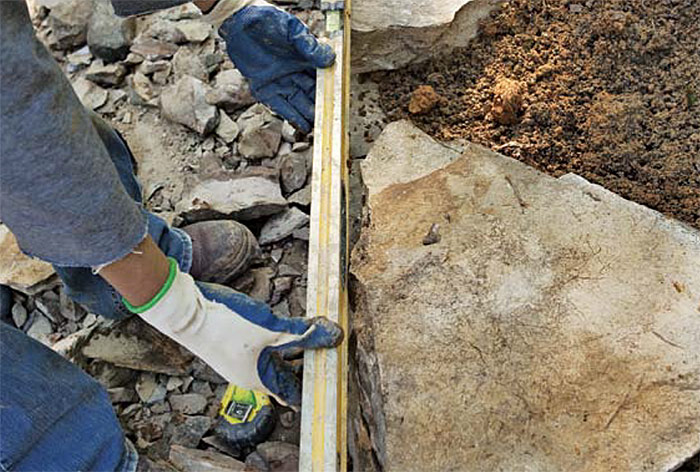
Setting Capstones
The height of the retaining wall is largely determined by the height of the bank against which you’re building. When the wall is a few inches below the bank, begin to anticipate how you will set the capstones.
Capstones will likely be of different thicknesses. Rather than trying to break them to the same thickness, adjust the top row of wall stones to accommodate the capstone variations. The goal, of course, is a flat, level row of capstones. You may have to test-fit stones several times before finding combinations that work 1. The height of your wall should be 1 in. to 2 in. below the edge of the bank, and the capstones should pitch forward slightly to allow water to flow over the wall during watering or heavy rain.
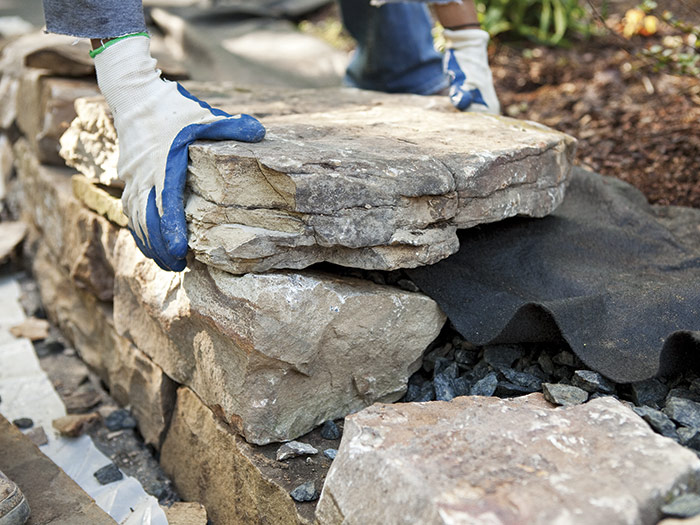
When you’re ready to set the capstones, fold the filter fabric to the wall, cut off any excess 2, and cover the fabric with gravel 3. Then set the capstones and backfill with soil 4.
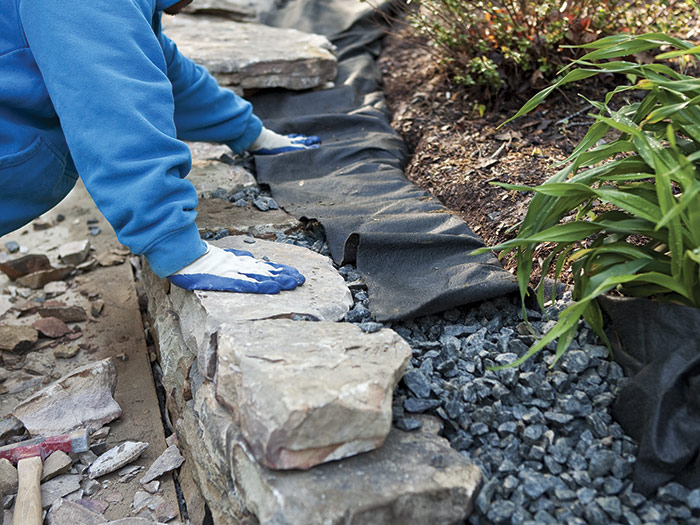
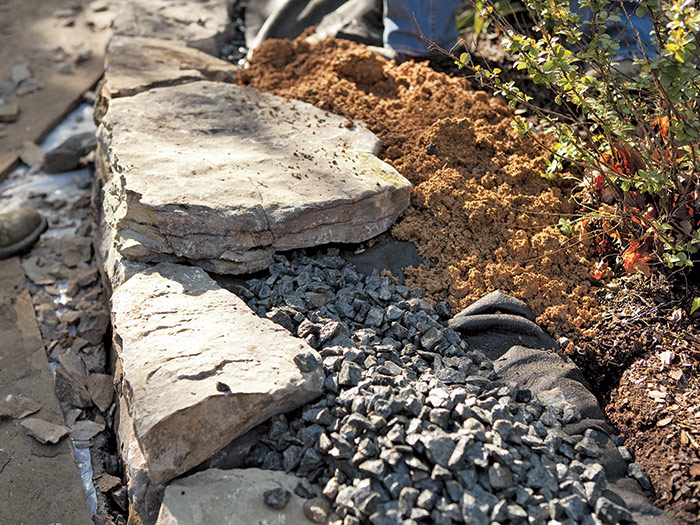

Capstones, in general, need only be deep enough to cover the top of the wall. However, periodically select a stone that spans from the front of the wall well into the bank 5. This will help keep the wall stable over time. In addition, frequently sight along the wall or check it with a level to ensure that the top leading edges are true 6.
5. Fill behind the capstones with soil. Compact the soil to help it stay put until it is properly landscaped.

Excerpted from Masonry Complete (The Taunton Press, 2012) by Cody Macfie
Available at Amazon.com.








